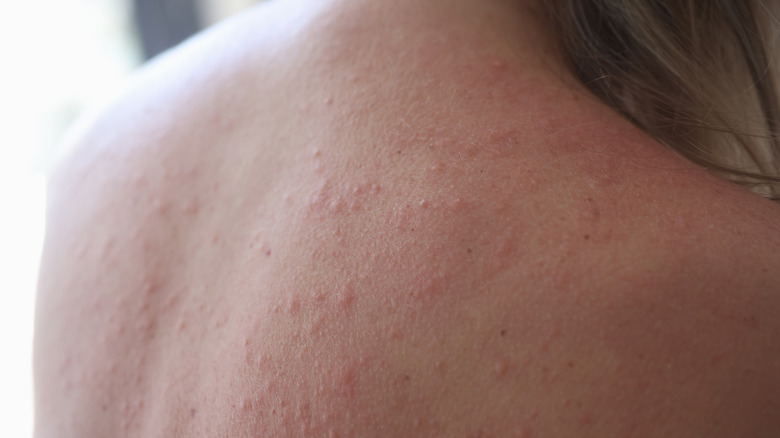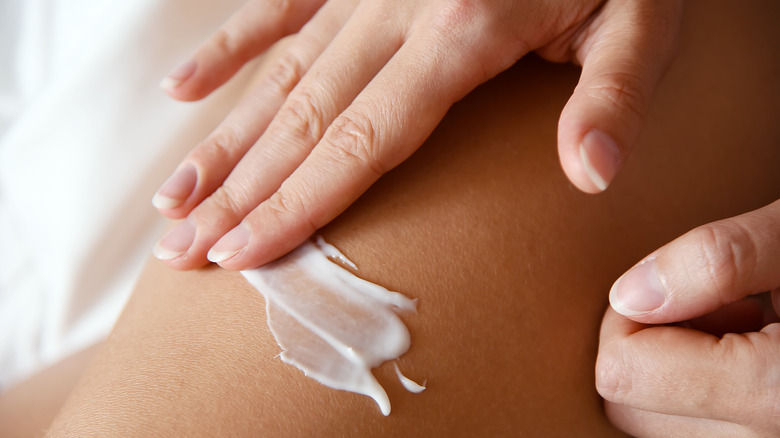How To Get Rid Of Sun Rash
After being exposed to the sun's UV rays for too long, you skin — and body — can react in numerous ways. For some, a rash can form in direct response to sun exposure. Sun rash, also known as solar urticaria, per Medical News Today, occurs in those who have a sensitivity to UV light, Healthline notes, causing an immune response. And while sun rash may sound similar (and maybe even look similar) to sunburn, the latter is a result of a direct burn from UV rays, rather than the immune response sun rash is.
And unlike heat rash, which occurs due to blocked pores that keep sweat locked in the skin, according to OSF HealthCare, sun rash occurs a few hours after overexposure to the sun and can present itself in a red rash usually accompanied by an itchy and burning sensation. According to Healthline, some may also experience groups of small bumps and blisters, as well as raised or rough patches of skin. If the rash hasn't healed before you venture back out into the sun, it has the possibility of spreading even further, Skin Kraft notes.
Here's how to soothe your skin from sun rash.
Ointments and a cold water compress can help get rid of sun rash
It can take quite some time for a sun rash to heal, but there are plenty of ways to treat the itch in the interim. A
ccording to Melinda Cooling, vice president of Advanced Practice Providers at OSF HealthCare, there are dozens of over-the-counter treatments to soothe your skin, like aloe vera or anti-itch ointments. Oral antihistamines can treat sun rash as well, according to Skin Kraft. If you don't want medicated treatment, you can try applying a cold compress to the area or even submersing yourself in a cool bath to aid relief.
In terms of taking care of blisters, which can appear from a sun rash, Cooling advised to keep the blisters "clean and try to prevent infection." Skin Kraft also recommends taking a painkiller and covering the blister so you don't expose it to further damage, like scratching or infection.
While a sun rash will typically clear up within 10 days, it's important to keep an eye on the area and be aware of any changes that could indicate an infection — such as your fever going up or increased pain or redness. In this instance, it's recommended that you seek urgent care to treat the infection as soon as possible.
Healthline also recommends seeking professional treatment if you've never experienced sun rash before, as it can look like other serious health issues, like dermatitis or lupus.

